The Munsons of Texas — an American Saga
Chapter Fifteen
GEORGE POINDEXTER MUNSON AND AGNES DAVIS AND THE GEORGE P. MUNSON FAMILY
SUMMARY
George Poindexter Munson was the eighth and last child of Henry William and Ann Munson. He was born at Oakland Plantation on June 4, 1832. His father died when George was sixteen months old, and George was raised by his mother and his stepfather, James P. Caldwell. George enlisted as a private in the Confederate Army in 1861, and served until the spring of 1864 when his brother Gerard was killed. In 1866 George married Agnes Davis, and they lived at several locations in Brazoria County including Oakland Plantation Velasco, Austin’s Bayou, and Bailey’s Prairie. They had four children of whom three grew to adulthood. Their only son, George P. Munson II, married and gave rise to the “George P. Munson family” of today. Their two daughters, Maud and Sarah, married two half-first cousin Caldwell brothers, Will and Milam, giving rise to the large family of Munson-Caldwells of Brazoria County.

George Poindexter Munson was named for George Poindexter, a prominent lawyer, soldier, judge, governor, and senator of early Mississippi [see Inset 14]. George Poindexter, about twelve years older than Henry William Munson, came to Natchez as a young “Jeffersonian” lawyer-politician in 1802 and became a leading legal and political figure in the Territory while Henry William was in his teens. Henry William must certainly have been an admirer and follower of Poindexter, must have admired him as a role model, and his later naming a son for him tells much of Henry William's values and aspirations.
George was only three years old when his mother married James Caldwell, and he was raised at Oakland Plantation by his mother and stepfather. He may have attended school near the plantation and in Velasco as the older boys had done, but there are no records of his attendance or of the expenses. In later years he was in school in Egypt, Texas, in Wharton County with his half-brother, Robert Milam Caldwell, who was four years younger. In a letter from Milam to James Caldwell from Egypt, Texas, the boys were asking permission to leave school early for the Christmas holidays. Milam wrote:
. . .our school will be out christmas. I want to now if we cant get of a little beforehand. George and myself have both got the lepracy [severe loneliness]. I never wanted to see home so bad in my life. . .I am a little distrest to know wether we can get away from this place or not - home sweet home.
On the back of the letter is the notation, “Milam's first letter.” The date of the letter might have been around the mid-1840s when Milam would have been about nine and George about thirteen years old. The school in Egypt was under the supervision of the Rev. Mr. Hord with Mr. Wilson as headmaster. This was probably one of the early Methodist schools in Texas, as the Rev. Jesse Hord was sent to Texas as a missionary by the Methodist Church before 1840.
In the spring of 1852, when he was 19, George was attending school in the vicinity of San Marcos, where his parents had recently moved. James Caldwell wrote Mordello Munson that George had arrived at their home in Hays County on Friday evening, May 20, “having ridden 56 miles that day,” and that “George will leave on Monday and the session will be out in July.” He added that he hoped George “will go to Bastrop to study medicine.”
After the death of James Caldwell on November 16, 1856, at the
home of Mordello Munson at Bailey's Prairie, George accompanied his
mother and his half-sister, Mary Jane, on their trip back to Hays
County. George wrote to brother Mordello, “the trip was
pleasant,” and that they “were nine days on the
road” ![]() . In the same letter he
wrote that his mother wanted him to remain there until the next
fall but “I can't consent to do so.” He asked if there
was “a chance to get Stroble's Place.” The marriage of
brother Gerard and Annie Westall and their residence at Oakland was
possibly the reason for George “wanting a home of my
own,” even though, he wrote, he knew he always had a home.
The “Stroble Place” must not have been available, as he
spent the next few years at Oakland Plantation, assisting with work
there, and at Bailey's Prairie. In the diaries of Sarah K. Munson,
there are many mentions of the trips George made between the two
plantations.
. In the same letter he
wrote that his mother wanted him to remain there until the next
fall but “I can't consent to do so.” He asked if there
was “a chance to get Stroble's Place.” The marriage of
brother Gerard and Annie Westall and their residence at Oakland was
possibly the reason for George “wanting a home of my
own,” even though, he wrote, he knew he always had a home.
The “Stroble Place” must not have been available, as he
spent the next few years at Oakland Plantation, assisting with work
there, and at Bailey's Prairie. In the diaries of Sarah K. Munson,
there are many mentions of the trips George made between the two
plantations.
George P. Munson’s Confederate Service — 1861–1864 [1]
In 1861 at age 28, George enlisted in the Confederate Army. He
enrolled and mustered into service on June 1st at Camp
Colorado near Coleman in West Texas as a private in Company B
(Captain William A. Pitts’ Company), First
(McCulloch’s) Regiment, Texas Cavalry (also known as First Regiment, Texas Mounted
Riflemen  ). This was the first regiment in Texas to be mustered
into Confederate service in 1861. On March 4, 1861, Confederate
Secretary of War Leroy Pope Walker directed Benjamin McCulloch to
raise a regiment of ten companies of mounted riflemen to protect
the Texas frontier between the Red River and the Rio Grande.
McCulloch, hoping for a command east of the Mississippi River,
turned the colonel’s commission over to his brother, Henry
Eustace McCulloch. This was not only the first regiment in the
state organized for Confederate service, but the original
commission to Ben McCulloch was one of the first in the
Confederacy.
). This was the first regiment in Texas to be mustered
into Confederate service in 1861. On March 4, 1861, Confederate
Secretary of War Leroy Pope Walker directed Benjamin McCulloch to
raise a regiment of ten companies of mounted riflemen to protect
the Texas frontier between the Red River and the Rio Grande.
McCulloch, hoping for a command east of the Mississippi River,
turned the colonel’s commission over to his brother, Henry
Eustace McCulloch. This was not only the first regiment in the
state organized for Confederate service, but the original
commission to Ben McCulloch was one of the first in the
Confederacy.
Though proof is lacking, George may well have been the first
from Brazoria County to enlist. If not, he was certainly among the
first. Information in Creighton’s History of Brazoria
County is that volunteer enlistments did not commence in that
county until the fall of 1861. Furthermore, the ten companies of
the First Regiment, Texas Mounted Riflemen, were not recruited
anywhere on the Gulf Coast ![]() . One can only guess, then,
why George enlisted so far from his home, and almost eight months
before his brother Mordello enlisted at Galveston in January 1862.
It is tempting to think he was caught up in the recruitment efforts
on a trip to or from Hays County where his mother Ann lived with
her son Milam Caldwell and his family, but apparently he enlisted
at Camp Colorado several months after those efforts had ceased.
. One can only guess, then,
why George enlisted so far from his home, and almost eight months
before his brother Mordello enlisted at Galveston in January 1862.
It is tempting to think he was caught up in the recruitment efforts
on a trip to or from Hays County where his mother Ann lived with
her son Milam Caldwell and his family, but apparently he enlisted
at Camp Colorado several months after those efforts had ceased.
One significant point is, of the three Munson brothers, George was the least encumbered. Mordello and Gerard each had a wife and young children, as well as a plantation to run, and George was only assisting Gerard at Oakland. With few responsibilities at home, it may have been a sense of duty in combination with a restless desire for adventure that drove George to the Texas frontier.
George’s service as a member of Company B is documented, though the records are not complete. The Company Muster Roll, dated September and October, 1861, reports that he was absent on detached service at Fort Mason (near the town of Mason) from 26 October 1861. The Regimental Return for July, 1861, shows him “on express to Camp Cooper (about 17 miles south of Throckmorton),” and the September 1861 Regimental Return, on detached service to Fredericksburg since the 24th of the month.
In a letter to Major Samuel Boyer Davis, Assistant Adjutant General, dated December 26, 1861, Colonel McCulloch, writing from the headquarters of the West Military District in San Antonio, requests a transfer for George:
George Munson a private in Co” B,, 1st Regiment of Texas Mounted Riflemen wishes to be transfered to Capt Perkins’ Company of Col Bates Regiment.
Mr Munson is a young man of property who lives on the Brosos where his property is and desires to be connected in the service with those whose special business it is to defend his property and home, he is a good relyable man and soldier that will do his duty any where he may go, is justly entitled to the favourable consideration of his officers, and as I cannot see that any injury could be done the service by the transfer respectfully ask that it may be granted, and if so that a copy of the order be sent to Capt Perkins at once.
Colonel McCulloch followed up with a letter written from Houston, 20 January 1862:
George Munson a private in Co” B,, 1st Regiment of Texas Vol Riflemen provisional C.S. Army desires a transfer to Capt Perkin’s Co of Col Bates’ Regiment.
Mr Munson is an excelent young man, and a good soldier, who has a large interest in land and negroes in the lower Brasos, and all his relations are living near Col. Bates’s Camp, many of whom are in that Regiment, under these cercumstances and believing that Genl Hebert would readily consent to the transfer I directed Capt Pitts Co “B,, to permit Mr Munson to report to Capt Perkins and now respectfully ask for an order of transfer which I have before done in another communication to you I think.
George probably knew Colonel Joseph Bates. He was a politician and soldier who in 1854 moved to a large plantation on the west side of the San Bernard River in Brazoria County, where he engaged in farming and ranching until his death.
Although he received a transfer by way of a special order dated 24 January 1862, George was not immediately given the assignment he had requested. Instead, he was transferred to DeBray’s Mounted Battalion and ordered to report to Atchison’s Company (26th Texas Cavalry, Company G (Atchison’s), DeBray’s Regiment, Davis’ Mounted Battalion). Considering that Mordello had enlisted in Company G the day before, this was either an amazing coincidence, or the result of a last minute request for which there is no extant documentation, probably the latter.
From Galveston, Mordello wrote to his wife, Sarah, of George being with the company on the night of February 9, 1862, when they expected a ship of Admiral Ambrose Burnside’s fleet to bombard Galveston. This proved to be a false alarm. From Galveston, George, like Mordello, moved eastward, and in 1863 was in Opelousas, Louisiana, near the Atchafalaya River, where there was heavy fighting. In a letter to Mordello he wrote that he had been ill and in the hospital, and that he was worried about Mordello since he had not heard from him in about three months. In the summer of 1863, after hearing that Mordello had been with the Confederate forces at the siege of Vicksburg and had been captured and released, he wrote: “As you got home safe I am selfish enough to rejoice that you was captured. I hope you will stay there.”
At an undetermined date, George joined Colonel Bates’ regiment, the one to which he had previously requested a transfer. Whether this was a transfer, reorganization or re-enlistment is not known. At the outbreak of the War Between the States, Joseph Bates was appointed a colonel in the Confederate Army. He raised a regiment that later became, after several reorganizations, the Thirteenth (Bates’s) Texas Infantry. He was placed in command of the coast defenses between Galveston and Matagorda Island and established headquarters at Velasco. From May to September 1863 he and his regiment served in Louisiana under Major General Richard Taylor. For a time Bates was commander of the post at Brashear City.
Probably near the end of 1863, George joined Company H of Colonel Reuben R. Brown’s Thirty-fifth Texas Cavalry. Brown was elected lieutenant colonel of Colonel Bate’s Thirteenth Texas Infantry and saw service on the Texas coast between Galveston and Matagorda Island, primarily near Brown’s home at the mouth of the Brazos. In 1862 he was given command of an independent cavalry battalion, the Twelfth, made up of companies from Bates’ regiment. Toward the end of 1863 Brown was promoted to colonel and organized and commanded the Thirty-fifth Texas Cavalry, a consolidation of his own and Major Lee C. Rountree’s battalions. This regiment served in Texas until it was transferred to Louisiana in the spring of 1864 and saw action in Brigadier General Henry E. McCulloch’s brigade of Walker’s Texas Division during the Red River Campaign. Brown’s was one of two regiments named the Thirty-fifth Texas Cavalry, the other being that of Colonel James B. Likens.
George was at home on leave at the time Gerard was killed — March 22, 1864. He had been at Bailey's Prairie all that day visiting with Sarah Munson and the children. Mordello had returned to the army a few weeks earlier and was in Louisiana. George had to assume the responsibilities for the Munson family in connection with this tragedy. A few days after the murder, George, accompanied by some friends, went to San Antonio to alert the regiments there about the escape of the soldier named Pankey. George then went to San Marcos to see his mother. Ann Caldwell, at the age of 64, was ill and was to live only another year and a half, and it was George's sad duty to tell her about the death of Gerard.
Upon his return home, George was busy for the next few weeks securing witnesses to testify at the civilian investigation. The investigation was held on May 17 and 18, 1864. Thereafter, George may have had a deferment from further service in the army, or service may have been voluntary. He now had to assume supervision of Oakland Plantation. There was much to be done for Annie and the children, and Sarah Munson would need assistance and company from time to time. An entry in the diary of Sarah Munson on October 18, 1864, states, “George is here. He came over yesterday with those men who killed Pankey.” Two years later, on February 13, 1866, George P. Munson, at the age of 33, married Agnes Davis.
Traditionally:
Agnes Blakely Davis was an unusual person for her time and place. She was born on February 22, 1842, in Mobile, Alabama, the daughter of Isaac S. Davis of New York and Matilda Blakely of Montreal, Canada. Isaac and Matilda Davis were devout Roman Catholics, and Matilda had been disowned by her Blakely father because of her Catholicism. Agnes completed what was then a good education for ladies at Ursuline Academy in Galveston. After her schooling, Agnes had to make her own way by teaching. Mordello Munson engaged her to tutor his children at Bailey’s Prairie about the time of the Civil War. It was there that George P. Munson met and courted her. Agnes was an intellectual person, and family tradition tells that she contributed articles to national magazines in the East [2].
The Real Story of the Davis Family
Family tradition, as wonderful as it may be, is rarely accurate in all its details. Research on the Davis family by Marianne Curson Gilbert of Phoenix, Arizona, and to a lesser degree, Laura Munson Cooper of Arlington, Texas, both great-granddaughters of Agnes Davis Munson, illustrates the truth of that statement.
Matilda Agnes Davis, her name as recorded in her baptism record and the family bible, was born February 22, 1850 [3] (not 1842) on Government Street in Mobile, Alabama. She was the sixth of seven children, and second of that name born to Isaac S. and Matilda Blakely Davis. (The first Matilda Agnes was born in 1843, and died in 1849). Agnes, therefore, was just shy of her sixteenth birthday when she married 33 year old George Poindexter Munson in 1866.
As an interesting side note, on an otherwise intact page in the
Davis family bible, there is a hole near the inside margin where
the year of Agnes’ birth was written. Although it can’t
be proven, it appears to be the result of a deliberate act to
conceal her age. There are two theories other than natural
deterioration of the paper. First, Agnes, having lost the last of
her immediate family by age thirteen, and on her own by age
fifteen, felt it necessary to conceal her age to better make her
way in the world. One has to wonder if Mordello and Sarah would
have hired her to tutor their children, or if George would have
given her a second glance, had they known her true age. On the
other hand, it is almost incomprehensible that a fifteen year old
could successfully pass as a twenty-three year old schoolteacher.
The second theory is that Agnes’ daughter Maud, who next
owned the bible, wanted to conceal that her mother married so
young, and to a man more than twice her age. The latter theory
arises from the fact that in 1943 Maud burned her mother’s
diary because of several things Agnes had written ![]() .
.
Matilda Agnes Davis’ Jewish Roots
Agnes’ grandparents, George and Rosetta Davis, were
English Jews who came to this country from London about 1809. They
lived in New York City and Tuscaloosa, Alabama, before moving to
Mobile in late 1823 or early 1824. In 1825 George began referring
to himself as "ORIGINAL George Davis" ![]() to
distinguish himself from others of the same name, and the title
stuck. He was involved in various pursuits, but was best known as
an auctioneer. By all accounts, he was a unique and colorful
character. George and Rosetta are buried in Mobile in the Jewish
section of the old Magnolia Cemetery.
to
distinguish himself from others of the same name, and the title
stuck. He was involved in various pursuits, but was best known as
an auctioneer. By all accounts, he was a unique and colorful
character. George and Rosetta are buried in Mobile in the Jewish
section of the old Magnolia Cemetery.
George and Rosetta Davis had five children. The youngest was
Agnes’ father Isaac born May 8, 1815, in New York City. ![]() Isaac was studying
medicine in Mobile when the Florida War (Second Seminole War) broke
out in 1835. Although very young, he joined a company and served
out his term with honor. Afterward, he returned to Mobile where he
was a merchant and auctioneer. He joined several fire companies,
founded one, and was a member of the “Can’t Get Away
Club,” a voluntary society in Mobile founded in 1839 by
gentlemen to provide healthcare to yellow fever sufferers.
Isaac was studying
medicine in Mobile when the Florida War (Second Seminole War) broke
out in 1835. Although very young, he joined a company and served
out his term with honor. Afterward, he returned to Mobile where he
was a merchant and auctioneer. He joined several fire companies,
founded one, and was a member of the “Can’t Get Away
Club,” a voluntary society in Mobile founded in 1839 by
gentlemen to provide healthcare to yellow fever sufferers.
In 1841 at the Cathedral of the Immaculate Conception in Mobile, Isaac S. Davis married Matilda Sophia V. Blakely, daughter of “Col. George Blakely, late of Quebec, Lower Canada” [4]. Research of the Blakely family has so far been a disappointing exercise because so little has been found. In Isaac’s obituary, Matilda’s father is called “Councilia George Blakely.” It also says he was “nearly connected to General Ross” [5] —probably Major General Robert Ross who is famous as the British general whose troops burned Washington, D.C. in 1814. If accurate, George Blakely was almost certainly of Scots-Irish origin, and therefore, probably Presbyterian. This would seem to support the family tradition that he disowned Matilda for marrying a Catholic, but records do not support that tradition.
Isaac and Matilda’s marriage record in the Mobile Catholic records reads as follows (emphasis added):
In the year of our Lord one thousand eight hundred & forty one, & on the eleventh of April I the undersigned Cath. Priest of Mobile, certify that I have joined together in the bonds of matrimony Isaac S. Davis & Matilda S. Blakely – the license of the court having been obtained dispensation from the publication of the banns and disparitate cultus granted & two witnesses present. In faith whereof I have signed. James McGarahan.
“Disparitate cultus (disparitas cultus) granted.” simply means that permission to marry in the Catholic Church was granted even though one of the parties was either of another faith, or an un-baptized Catholic. To support tradition, that person would have to be Matilda. However, at the time of their marriage in 1841, Isaac was a Jew:
In the year of our Lord one thousand eight hundred and forty two and on the twenty fourth of December, i the undersigned vicar general of the right Rev. Bishop of Mobile certify that i have baptized with the [ ] rites of church Isaac Davis, aged about twenty eight years, who abjured judaism and joined the catholic church. Godmother Margaret Berranjan. in faith whereof i have signed[,] J. Bozin [6].
The only possible conclusion is it was Matilda, not Isaac, who was Roman Catholic at the time of their marriage. According to her obituary Matilda was a convert, but she only appears in the Mobile Catholic records in regard to her marriage and the births of five of her seven children. Whatever the complete story may be, the facts render family tradition of disownment inaccurate, either wholly or in the details.
The Davis Family in Texas
In the depression that followed the financial panic of 1857,
“Capt. Davis lost a fortune, but seemed to bear it without a
murmur, as coming from the hands of Divine Providence” [7]. The following year Isaac and
Matilda moved from Mobile to Galveston ![]() with the only two of their
seven children to survive more than a few years—Claudious,
who was called Leo, and Agnes.
with the only two of their
seven children to survive more than a few years—Claudious,
who was called Leo, and Agnes.
When Texas seceded from the Union in 1861, Isaac “was the first to raise a company to protect Galveston, but was ordered to the Rio Grande. The day previous to his departure he was attacked by severe illness, but said he would be carried aboard the vessel before he would resign” [8]. He was commissioned 1st Lieutenant in Captain August A. Tomlinson’s Company F, Infantry, Rio Grande Regiment, John S. “Rip” Ford, commanding, but died of his illness in July 1861, probably in Cameron County, at age 46. Leo had enlisted, probably at the same time as his father, and was also ordered to the Rio Grande. He drowned June 21, 1863, at Sabine Pass at age twenty. Their deaths are recorded in the family bible.
When Isaac and Leo left Galveston, Matilda and Agnes moved to
the Ursuline Convent. Matilda died there “after a long and
painful illness, borne with Christian fortitude” in August
1862 [9]. She is buried in Galveston, but
there is no stone that marks her grave. ![]()
Agnes probably remained at the convent where, according to family tradition, she received a fine education. Though no record exists that proves Agnes attended Ursuline Academy, information from the Ursuline archivist is that there exists very few records for that time period in Galveston.
Just how or when Agnes ended up in Brazoria County is not known, but it may have had some connection to the arrival in Brazoria of Reverend Peter Berthet.
The first record found of Father Berthet is a letter dated 9 March 1861 from Liberty, Texas, in which he mentioned, among other things, that the Ursulines are well and that their pupils increase every day. He was in Liberty at least until the end of May 1864. In August of that year, he was in France, but wrote a letter to Bishop Odin in New Orleans in which he expressed a desire to return to Texas even though his family and friends wanted him to stay. He wrote the next month that he loves the old France but still prefers Texas. He returned in January 1865, and was assigned the mission in Brazoria. In a letter from there on 12 June 1865, to Archbishop John Mary Odin, C.M., in New Orleans, Father Berthet wrote that he was preparing to set up a Catholic school at Brazoria. He had recently been given the mission that included “all the country from the railroad at Galveston to Colorado and from the Gulf to the railroad from Columbus to Houston” [10].
Some of the students from Ursuline in Galveston may have been transferred to Brazoria when the new school opened, or some of the older students may have gone there as teachers or aides. The latter seems plausible because Agnes was hired as a tutor for Mordello and Sarah Munson’s children at Ridgley Plantation, even though she could not have been more than 15 years old. It was while she was working at Ridgley that she met George P. Munson. They were married by Father Berthet in 1866, a little over a week before Agnes’ sixteenth birthday.
George P. and Agnes Davis Munson — 1866–1878
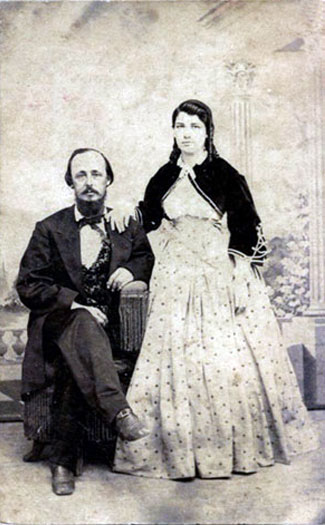
George P. & Agnes Davis Munson
After Gerard’s death, George was manager of Oakland Plantation, and George and Agnes lived at Oakland with Annie Munson and her four children. Annie died one year later in September of 1867, and her children were taken into the home of Mordello and Sarah Munson. With brothers William and Gerard and parents James and Ann Caldwell having died, George and Mordello were the only adult Munsons left alive. With Mordello firmly established at Ridgely Plantation at Bailey’s Prairie, Oakland was inherited by George. Despite many very difficult times, the 770 acres are still owned by his descendants today.
In 1869 George and Agnes moved to a house “on the
Beach.” He wrote to his half-brother, Milam Caldwell, on
December 4, 1869, that they had a “pleasant little
home” and that he had leased Oakland Plantation to a Mr.
Mimms for five years. The old home ![]() , he wrote, was badly in
need of repairs and it was almost impossible to get help of any
kind. This was soon after the end of the Civil War—all slaves
had been freed, economic conditions were depressed, and
carpetbaggers and scalawags were problems. In ten years Texas had
gone from one of the most prosperous states in the United States to
one of the least prosperous. It was perhaps while they were living
at the beach that Agnes taught at Oyster Creek School. A year or
two later George and Agnes were living at Austin’s Bayou in
the eastern part of Brazoria County, in the vicinity of Liverpool.
Agnes also taught school there for a while.
, he wrote, was badly in
need of repairs and it was almost impossible to get help of any
kind. This was soon after the end of the Civil War—all slaves
had been freed, economic conditions were depressed, and
carpetbaggers and scalawags were problems. In ten years Texas had
gone from one of the most prosperous states in the United States to
one of the least prosperous. It was perhaps while they were living
at the beach that Agnes taught at Oyster Creek School. A year or
two later George and Agnes were living at Austin’s Bayou in
the eastern part of Brazoria County, in the vicinity of Liverpool.
Agnes also taught school there for a while.
George and Agnes’ first child, a daughter Mary Claud, was
born June 8, 1867, at Bailey’s Prairie [11], perhaps at Ridgely Plantation.
If so, Sarah Munson did not record the event in her diary. Claud,
as she was called, was undoubtedly named for Agnes’ older
brother Claudious (Leo) who had drowned several years earlier at
Sabine Pass while serving in the Confederate Army. The next five
and a half years with no recorded children were followed by the
birth of three children in rapid succession. On August 21, 1873,
their second child, a son, was born at Austin’s Bayou [12]. He was originally christened
George Blakely Munson, after his grandmother, Matilda Blakely,
whose father had disowned her because of her religion. When George
became older he objected to being so named and took his
father’s middle name Poindexter ![]() . Because his father died
young, George II was known as George P. Munson until his son was
named for him, after which he was known as George P. Munson Sr. and
his son, George III, as George P. Munson Jr.
. Because his father died
young, George II was known as George P. Munson until his son was
named for him, after which he was known as George P. Munson Sr. and
his son, George III, as George P. Munson Jr.
George, Agnes, and the children ![]() visited Mordello’s
family at Bailey’s Prairie as often as possible. In one
undated letter from Austin’s Bayou, Agnes wrote to Emma
Munson, eldest daughter of Mordello and Sarah, that they hoped to
spend Christmas at Bailey’s Prairie.
visited Mordello’s
family at Bailey’s Prairie as often as possible. In one
undated letter from Austin’s Bayou, Agnes wrote to Emma
Munson, eldest daughter of Mordello and Sarah, that they hoped to
spend Christmas at Bailey’s Prairie.
Early in 1875 George and Agnes moved from their Austin’s Bayou home to a new home at Bailey’s Prairie. Their new home was on a ridge about three-fourths of a mile south of the home of Mordello and Sarah on land owned by Mordello. It was on this same site that their son, George II, later built his first home. On November 1, 1877, Mordello conveyed by deed to his younger brother, George, a tract of land comprising 100 acres in the southwest corner of the Cornelius Smith Survey. It is not known if this was a gift or was part of the division of the estate interests. This tract was intended to include the location of the ridge where Agnes and George had their home, but did not, due to an error in the field notes. At their Bailey’s Prairie home, George and Agnes had two additional daughters, Mordella Stephen “Maud” Munson, born July 12, 1875, and Sarah Kimbrough Munson III, born February 3, 1877. These namings indicate their fond feelings for their brother and sister-in-law.
Agnes and George’s first daughter, Claud, died before she
was five years old and is buried in the Munson Cemetery at
Bailey’s Prairie. George P. Munson I died on April 19, 1878,
in Columbia, Texas, at the age of 45 and is buried in the Munson
Cemetery. Agnes Munson was remarried to J. B. Hawkins in July of
1880. The marriage was a stormy affair. Entries in Agnes’
diary told of her husband’s sudden and unexplained trips to
one of the Carolinas. Upon his return from one of these trips, he
caught her trying to get into a locked trunk that he had forbidden
her to open. A huge row ensued. Other entries told of his abusive
treatment of young George. She died in Columbia, perhaps in
childbirth ![]() , on February 25, 1882,
and is buried in Old Columbia Cemetery in West Columbia.
, on February 25, 1882,
and is buried in Old Columbia Cemetery in West Columbia.
After Agnes’ death, Mordello and Sarah gave a home to the
three children: George P. II (aged 10), Maud (aged 8), and Sarah
III (aged 6). Sarah’s diary describes their arrival.
Sarah’s son, George, and his young wife, Hannah (Adriance),
had been living at Ridgely since their marriage in 1878. On
February 23, 1882, they and their baby daughter, Lydia, had made
the move to the “Van Place,” the first children to move
away from the plantation. An entry in Sarah’s diary dated
February 26 reads, “Sabbath, Emma’s birthday. . .
We heard this morning of the death of Mrs. Hawkins. Poor Agnes how
sad I feel to hear that she is gone, and feel for the poor little
orphans.” On the next day she records: “Mr. Munson told
Mr. Shapard to tell Mr. Hawkins ![]() to send the children out
on the train tomorrow. Emma put up the bed and fixed up
Doll’s room.” An entry on the next day says,
“Waddy went up to meet the little children but they did not
come,” and on March 2: “Waddy went to the depot and
found the children there, he brought Georgie home [on his horse],
and Emma and Armour went up and brought Maud and Bittie down. Poor
little things are perfectly delighted to get back. Mr. Munson and
the boys went fishing again, caught a nice mess of trout &
perch.” On March 4 she wrote, “Waddy sent the wagon for
the children’s things this evening,” and on March 7,
“I commenced my school again. Have an addition in George,
Maud and Bittie.”
to send the children out
on the train tomorrow. Emma put up the bed and fixed up
Doll’s room.” An entry on the next day says,
“Waddy went up to meet the little children but they did not
come,” and on March 2: “Waddy went to the depot and
found the children there, he brought Georgie home [on his horse],
and Emma and Armour went up and brought Maud and Bittie down. Poor
little things are perfectly delighted to get back. Mr. Munson and
the boys went fishing again, caught a nice mess of trout &
perch.” On March 4 she wrote, “Waddy sent the wagon for
the children’s things this evening,” and on March 7,
“I commenced my school again. Have an addition in George,
Maud and Bittie.”
Mordello’s eldest son, Henry W. Munson III, then 32 years
old, was appointed as the children’s guardian ![]() . Milam Stephen Munson,
Mordello’s youngest child, was then 13, and Geddie, the
youngest of Gerard’s, who was living at Bailey’s
Prairie, was 18. These three newly adopted young cousins were the
only small children in the household, and they were given much love
and attention by the older children and by their new parents. They
attended school on the plantation as the other children had done,
and were sent to other schools when older. George P. II attended
the new Agricultural and Mechanical College of Texas, and the girls
were sent to a private school for young ladies in Houston. It was
these two Munson daughters, Maud and Sarah, who married their two
half-first cousins, the brothers Thomas William “Will”
Caldwell and Robert Milam Caldwell II, and gave rise to two large
families of Caldwells who are also Munsons. These families are
described in Chapter 12.
. Milam Stephen Munson,
Mordello’s youngest child, was then 13, and Geddie, the
youngest of Gerard’s, who was living at Bailey’s
Prairie, was 18. These three newly adopted young cousins were the
only small children in the household, and they were given much love
and attention by the older children and by their new parents. They
attended school on the plantation as the other children had done,
and were sent to other schools when older. George P. II attended
the new Agricultural and Mechanical College of Texas, and the girls
were sent to a private school for young ladies in Houston. It was
these two Munson daughters, Maud and Sarah, who married their two
half-first cousins, the brothers Thomas William “Will”
Caldwell and Robert Milam Caldwell II, and gave rise to two large
families of Caldwells who are also Munsons. These families are
described in Chapter 12.
After leaving Texas A. & M. College, George P. Munson II was a stockman and farmer at his home on Bailey’s Prairie for the remainder of his life. On October 10, 1906, at the age of 33, he married Louise Underwood. Louise was born in Columbia (now East Columbia), Texas, the daughter of Joseph Patterson Underwood and Louisa Amanda Barnes Hanks. Joseph Underwood was a prosperous merchant in Columbia, and they had a large home there. This home still stands today as the historic “Underwood House” and is occasionally open for historic tours.
The Underwood Family [13]
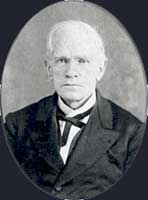
Ammon Underwood
Ammon Underwood, the grandfather of Louise, came to Texas from
Massachusetts in 1834, arriving at Bell’s Landing ![]() , now East Columbia. He was
born at Dracut, Massachusetts, on February 13, 1810, the eighth of
nine children by his father’s second wife Mercy Durant.
According to his journal, his reason for coming to Texas was to
“gratify a wild and rambling notion.”
, now East Columbia. He was
born at Dracut, Massachusetts, on February 13, 1810, the eighth of
nine children by his father’s second wife Mercy Durant.
According to his journal, his reason for coming to Texas was to
“gratify a wild and rambling notion.”
Ammon Underwood was the son of Asa Underwood and his second wife, Mercy Durant. Asa was born on August 30, 1754, in Boston, and lived there until he was almost twenty years old [14]. At the age of 20 he marched with Colonel Davis Green’s regiment at Cambridge on the alarm of April 19, 1775, eleven days after the “shot heard ‘round the world” was fired at Lexington. Also marching to the alarm, but in a different company, was Asa’s future father-in-law, Jacob Durant. Both men are listed in records as Dunstable Minutemen—Dunstable referring to “Old Dunstable” that was then a claimed by both Massachusetts and New Hampshire.
In Texas Ammon Underwood volunteered for the Texian Army
in September of 1835, and took part in the march on San Antonio and
the Battle of Concepción ![]() under the leadership of
Stephen F. Austin, James Bowie, James Fannin, and Ben Milam. This
was an early battle of the Texas Revolution fought near San Antonio
on October 28, 1835. An all volunteer detachment of ninety men
repulsed a Mexican cavalry force of about four hundred, losing one
man and killing about sixty Mexicans. The Texian forces
proceeded to capture San Antonio in December of 1835. Ben Milam
lost his life in this encounter, and six months later James and Ann
Caldwell named their first child Robert Milam Caldwell. This
capture of San Antonio by Texian forces led to Santa
Anna’s siege of the Alamo in February and its fall on March
6, 1836.
under the leadership of
Stephen F. Austin, James Bowie, James Fannin, and Ben Milam. This
was an early battle of the Texas Revolution fought near San Antonio
on October 28, 1835. An all volunteer detachment of ninety men
repulsed a Mexican cavalry force of about four hundred, losing one
man and killing about sixty Mexicans. The Texian forces
proceeded to capture San Antonio in December of 1835. Ben Milam
lost his life in this encounter, and six months later James and Ann
Caldwell named their first child Robert Milam Caldwell. This
capture of San Antonio by Texian forces led to Santa
Anna’s siege of the Alamo in February and its fall on March
6, 1836.
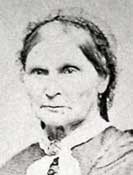
Catherine Patterson
After the Battle of Concepción, Ammon Underwood went on
furlough and was soon appointed head of the post commissary at
Columbia [15]. In 1838 he entered business
with Mrs. Catherine Carson, a widow who had come to Texas in 1824
from Catahoula Parish, Louisiana, with her husband, William, and
three children ![]() . The Carsons were members
of Stephen F. Austin’s original three hundred colonists and
were granted a league of land on the Bernard River [16]. After her husband’s
death, Mrs. Carson moved to Columbia
. The Carsons were members
of Stephen F. Austin’s original three hundred colonists and
were granted a league of land on the Bernard River [16]. After her husband’s
death, Mrs. Carson moved to Columbia ![]() where she made a living
operating a boarding house catering primarily to students of the
Thomas J. Pilgrim school see Chapter 13]. She and Ammon Underwood
entered into a business partnership and bought the Thomas W. Nibbs
property, which included a two-story log house built in 1835. They
had the house enlarged and opened a boarding house. The work must
have been completed in the latter part of 1838, because on January
7, 1839, Ammon Underwood married Catherine Carson’s daughter,
Rachel, and the ceremony took place in the new house. This was the
origin of the historic “Underwood House,” one of the
oldest and most beautiful buildings standing in East Columbia,
Texas, today.
where she made a living
operating a boarding house catering primarily to students of the
Thomas J. Pilgrim school see Chapter 13]. She and Ammon Underwood
entered into a business partnership and bought the Thomas W. Nibbs
property, which included a two-story log house built in 1835. They
had the house enlarged and opened a boarding house. The work must
have been completed in the latter part of 1838, because on January
7, 1839, Ammon Underwood married Catherine Carson’s daughter,
Rachel, and the ceremony took place in the new house. This was the
origin of the historic “Underwood House,” one of the
oldest and most beautiful buildings standing in East Columbia,
Texas, today.
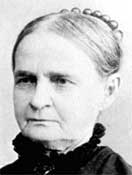
Rachel Jane Carson
After their marriage the young couple lived in the house, and it was operated as a boarding house with Mrs. Carson in charge. In 1846 Mrs. Carson married Gail Borden Sr., and he moved into the house. Both the 1850 and 1860 censuses list them all as living there with Ammon Underwood as head of the household.
For many years Ammon Underwood conducted a successful mercantile business in what is now East Columbia. He owned a large brick store near the Brazos River and had his own wharves and loading docks on the water’s edge. In addition to being a merchant, he was a cotton factor and owned two working plantations. He was also postmaster at Bell’s Landing from 1836 to 1845. His name is included in an article entitled “Wealthy Texans – 1860” in the Southwestern Historical Quarterly, October, 1967. As with many other wealthy Texans, much of his fortune was lost at the end of the Civil War. When Union troops captured Galveston, they took the cotton in the warehouses there, including a large amount owned by Ammon Underwood. Such merchants also lost heavily from the worthless Confederate money which they held at the end of the War.
After the War, Ammon Underwood continued to operate his store, and he and Rachel continued to live in the Underwood home until December 25, 1875. On that date they deeded the house to their oldest son, Joseph Patterson Underwood and his wife, Louisa, possibly as a Christmas present. The elder Underwoods moved into living quarters over their store, and he represented the Brazoria District in the Nineteenth Texas State Legislature which met in Austin from January 13 to March 31 of 1885. Ammon Underwood died on November 17, 1887, at the age of 77. He is buried in Old Columbia Cemetery in West Columbia, where the State of Texas has erected an historical marker on his grave. Rachel died on February 14, 1896, in Galveston.

Joe & Lou Underwood
Joseph Patterson Underwood was born on February 26, 1845. He enlisted in the Confederate army on January 1, 1863, two months before his 18th birthday. He served until the end of the War in Gibson’s Battery of Light Artillery in Wharton’s Division. Soon after his return, he entered the mercantile business with his father. On June 22, 1867, he married Louisa Amanda Barnes Hanks. She was born in Pittsboro, North Carolina, on June 3, 1847, the daughter of Dr. John Armstrong Hanks and Euphemia Morris Hanks. She came to Texas in May of 1866 at the age of 18. Joseph said later that when he saw her step off the steamboat at Columbia, he vowed she would be his wife. “Mr. Joe,” as he was usually called to differentiate him from his father, who was always Mr. Underwood, continued to operate a store until shortly before his death on February 1, 1925. Louisa Underwood died on February 2, 1912. They are both buried in Old Columbia Cemetery.

Laura Underwood
Joseph and Louisa Underwood had four children: Kate (born February 11, 1869, and died June 8, 1912), Laura (born December 21, 1877, and died September 15, 1960), John Hanks (born January 21, 1879, and died September 16, 1937), and Louise (born July 8, 1880, and died September 5, 1946). Of these, only the youngest daughter, Louise, was ever married. Laura Underwood, Louise’s sister, painted with oils and gave art lessons to students, including this writer’s mother. This writer has several paintings and drawings signed by his mother and dated 1905, and also two small oil paintings by Laura Underwood—one of the small building in Columbia which served as the first capitol of the Republic of Texas in 1836, and the other of the famous triple-trunked live oak tree in Columbia, under which, according to tradition, the first constitution of the Republic of Texas was adopted. This majestic tree was destroyed in the 1900 storm.
The Family of George P. Munson II and Louise Underwood
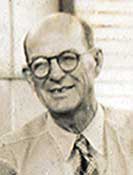
George P. Munson II
George P. II and Louise Underwood Munson built their first home near the southeast corner of the 100-acre plot which he had inherited from his father, and where he had lived as a boy with his parents. In the latter part of 1909, about three years after George and Louise married, their home burned and they lost nearly everything in the house. In 1910 George built their second home a short distance to the north of the first in a grove of ancient live oak trees. George's first cousin, Milam Stephen Munson, with whom he had lived during their teenage years, gave George and Louise the 3.34 acre tract on which the second house was built. The tract lies adjacent to the original 100 acres. It was in this home that George and Louise raised their family.
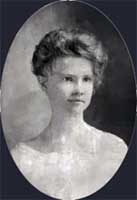
Louise Underwood
The seven children of George P. Munson II and Louise Underwood Munson, all raised at Bailey's Prairie, were:
- George P. Munson III b. November 13, 1907
- Catherine Munson b. December 31, 1908
- Joseph Underwood Munson I b. April 25, 1912
- Laura Louisa Munson b. December 13, 1913
- John Hanks Munson I b. February 6, 1916 d. January 3, 1986
- Robert Milam Munson b. October 20, 1918
- Virginia M. Munson b. July 18, 1922
George P. Munson II died on January 6, 1944, at the age of 70, and Louise on September 5, 1946, at the age of 66. Both are buried in the Munson Cemetery at Bailey's Prairie, just across State Highway 35 from where they spent most of their lives.
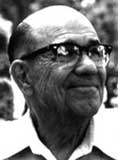
George P. Munson III
George Poindexter Munson
III was born in the Underwood home in East Columbia, was raised
at Bailey’s Prairie, and attended Texas A. & M. College.
He graduated in 1928 with a degree in civil engineering and an
appointment as Second Lieutenant in the U. S. Army Reserve ![]() . He was engaged in the
practice of civil engineering all of his life, including seven
years in the U. S. Army Corps of Engineers. From 1932 until 1941 he
was employed by the Texas Highway Department. With war clouds
gathering, he was called into active military service in September
of 1941 in the grade of Captain, and was assigned as a company
commander. In 1943 he was given command of the 843rd
Engineer Aviation Battalion, in which assignment he participated in
the Normandy Invasion, the liberation of Paris, and the allied
advance across Western Europe to Munich, Germany. After the war he
remained in the army reserve in the grade of Colonel, and returned
to the Texas Highway Department as district maintenance engineer in
the Houston District.
. He was engaged in the
practice of civil engineering all of his life, including seven
years in the U. S. Army Corps of Engineers. From 1932 until 1941 he
was employed by the Texas Highway Department. With war clouds
gathering, he was called into active military service in September
of 1941 in the grade of Captain, and was assigned as a company
commander. In 1943 he was given command of the 843rd
Engineer Aviation Battalion, in which assignment he participated in
the Normandy Invasion, the liberation of Paris, and the allied
advance across Western Europe to Munich, Germany. After the war he
remained in the army reserve in the grade of Colonel, and returned
to the Texas Highway Department as district maintenance engineer in
the Houston District.
He was again called to active duty, for the Korean War, in January of 1952 in the grade of Colonel, and was assigned as commander of the 44th Engineer Group (regiment) at Ft. Leonard Wood, Missouri. He was later sent to France as commander of the 20th Engineer Brigade, one of the permanent U. S. Army engineer brigades. He thus commanded, in sequence, a company, a battalion, a regiment, and a brigade.
After the Korean War, he returned to the Texas Highway Department where he was engaged in the design, construction, and maintenance of roads and bridges; and to the Army Reserve where he commanded the 406th Engineer Brigade in the grade of Brigadier General and later the 75th Army Maneuver Area Command in the grade of Major General. He retired from the Army Reserve in 1965 and the Texas Highway Department in 1972.
In retirement General George P. Munson was executive director of the Coastal Industrial Water Authority in Liberty, Chambers, and Harris Counties, in which position he supervised the design, construction, and operation of one of the largest water supply and transportation installations ever constructed in Texas. He retired from this assignment in 1983 at the age of 75.
On July 28, 1930, George married Eula Bee German and they have two daughters: Ruth Munson Blackmore and Sara Munson Deats. There are no grandchildren. Eula Bee Munson passed away in Houston on February 3, 1971, and is buried in the Munson Cemetery at Bailey’s Prairie. George married Ethel B. Jungman of Houston on June 19, 1973. Ethel passed away March 2, 1995, and George on January 1, 2000, at age 92. He is buried beside Eula Bee in the Munson Cemetery.
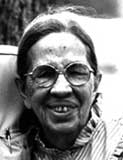
Catherine Munson
Catherine Munson, the second child of George P. Munson II and Louise Munson, was born on December 31, 1908, in the old Underwood home in East Columbia. It seems that Louise always went “home” for the birth of her children, probably to be with her mother, but also to obtain the services of a doctor in East Columbia. Catherine graduated from Angleton High School and attended the College of Industrial Arts, now Texas Woman’s University, in Denton, Texas, graduating in 1929 with a degree in journalism. She worked for the Fort Worth Record Telegram and for the Houston Press.
On December 30, 1929, she married William Ligon Foster, who worked for General Motors Corporation. After being transferred from place to place in Texas and Oklahoma, Ligon Foster obtained the Pontiac dealership in Angleton, and the family settled there. Ligon served several terms on the Angleton City Council and was mayor from 1973 to 1975. They have three daughters, Louise Foster Krohn, Virginia Foster Monahan, and Kay Foster Xifo, three grandchildren and three great-grandchildren.
Catherine worked for the Brazoria County Library from 1954 to 1970, as head librarian in the later years. She is best known for her stories and legends of Brazoria County, which she told at speaking engagements to schools, scout meetings, 4-H clubs, and adult groups. In 1977 she published a collection of these tales called Ghosts Along the Brazos, which is now in its sixth printing. She contributed substantially to the book A Narrative History of Brazoria County by James A. Creighton. For many years she wrote a weekly column for the Angleton Times, conducted tours of historical sites in Brazoria County (including the old Underwood home), and worked as a volunteer at the Brazoria County Historical Museum. Catherine passed away 22 September 1995, at age 86, and Ligon on 25 October 1998, at age 93. Both are buried in the Munson Cemetery.
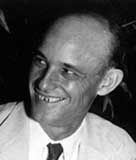
Joe U. Munson
After high school Joe’s various work experiences in skilled labor led to a position with the Dow Chemical Company in Freeport, Texas. He became Pipeline Superintendent with responsibility for all of Dow’s pipeline operations in the Texas area, as well as consultant to the company on pipeline operations in other areas. He retired from Dow in 1977, after which he was called back frequently for his expertise in the pipeline field. He and Ruth Anna lived in Angleton most of their married life. Joe passed away June 13, 1997, at age 85, and is buried in the Underwood plot in the Old Columbia Cemetery. Ruth Anna lives with her youngest son George and daughter-in-law Margie at Bailey’s Prairie.
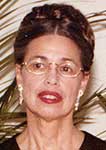
Laura Munson
Laura Louisa Munson, the fourth child of George and Louise, was born on December 13, 1913, during the big flood of that year. The family was staying at the Taylor place, a large house built high off the ground between East and West Columbia. Dr. Marcus Weems, the attending physician, arrived by boat. Laura graduated from West Columbia High School and attended the University of Oklahoma and the University of Houston. She taught for one term—the only teacher in a one-room school in a rural district near West Columbia. The school was open for only seven months so the students could help with the farm and harvesting chores. Laura found this a traumatic experience as the students, especially the older boys, were difficult to discipline and their prior education had been poor. She was shocked to find that not a single student in the school knew the name of the governor of Texas.
After this experience Laura gave up teaching and attended business school in Houston. Several previous jobs led her to the position of legal secretary in the law firm of Matthews and Ferguson and for the independent lawyer, Joe Ingraham, who rented space from this firm. Laura and Joe were married on October 29, 1954. Joe Ingraham was appointed U. S. District Judge by President Eisenhower and, in 1969, to a U. S. Fifth Circuit judgeship. Joe passed away May 27, 1990, at age 86, and Laura on September 28, 2005, at age 93. Both are buried in Houston. They had no children.
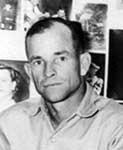
John Hanks Munson
John Hanks Munson I, the fifth child of George and Louise, has the distinction of being the only child to be born in the George P. Munson home at Bailey’s Prairie, where he was born on February 6, 1916. He graduated from West Columbia High School and attended Texas A. & M. College where he studied civil engineering. As a civil engineer in structural, hydraulic, and other design engineering, he worked for the Jefferson Lake Sulphur Company, the City of Freeport, and the Dow Chemical Company.
On May 27, 1939, John married Billie Marshall of Brazoria, Texas. They have one son, John Hanks Munson II, two granddaughters and one great-granddaughter. After working for Dow in Freeport for some years, John Hanks Munson I was transferred to Houston and he and Billie established a home in Sugar Land, Texas. John retired from Dow in 198l at the age of 65. He passed away on January 3, 1986, at the age of 69, and is buried in the Munson Cemetery. Billie Munson passed away April 28, 2003, at age 84, and is also buried in the Munson Cemetery.
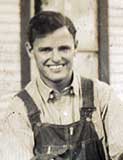
Robert Milam Munson
Robert Milam Munson, the sixth child of George and Louise, known to his family and friends as Bob or Bobby, was born on October 20, 1918, in the Underwood house in East Columbia. He graduated from West Columbia High School and attended Texas A. & M. College, leaving to enlist in the Naval Air Force during World War II. After the war, Bob’s entire career was spent in the insurance business. He began as a salesman for the Cannan Insurance Company in Angleton. After some years he bought the company and reorganized it as the Munson Insurance Agency, which grew to become the largest such company in the county.
Bob married Jessica Lang on March 4, 1949, and they have three daughters: Suzanne Munson Rhodes, Elizabeth Munson Schumm, and Laura Munson Comola, nine grandchildren, and two great-grandchildren, at this time. On June 1, 1985, Bob sold his business and retired. He passed away in a Houston hospital January 6, 2006, and is buried in the Munson Cemetery. Jessica lives in Angleton.
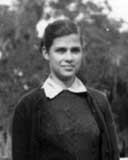
Virginia Morris Munson
Virginia Morris Munson, the seventh and youngest child of George and Louise, was born in the Underwood house in East Columbia on July 18, 1922. She was valedictorian of her West Columbia High School graduating class and attended Texas Woman’s University in Denton. With the advent of World War II she enlisted in the WAVES and served in San Francisco and Hawaii. After the war she entered the University of Houston where she earned a degree in education.
On August 7, 1948, Virginia married Creath Morris “Mac” McGee, a partner in the accounting firm of O’Connor, Lawson, and McGee. They have three children: Katherine McGee Fewox, William Morris McGee, and Mary McGee Martin, and one grandchild at this time.
Virginia taught school briefly, then retired to raise her family. Later, with the children grown, she acquired a degree in library science from the University of Houston at Clear Lake. She served as librarian at Atherton, an inner-city, elementary school in Houston, until her retirement in 1984. “Mac” passed away May 9, 2001, at age 89. Virginia lives in Houston.

George P. Munson II, the only son of George Poindexter Munson I,
had four sons, and among them they had three Munson sons; but to
this date there are only two Munson sons in the next (fourth)
generation to carry on the Munson name. All of the descendants of
George Poindexter Munson II are shown on the accompanying charts 10B and 10C.
____________________
- [1] Unless otherwise noted, all information relating specifically to George P. Munson’s Confederate service is from Compiled Service Records of Confederate Soldiers who Served in Organizations from the State of Texas, micropublication M323 (Washington: National Archives), Rolls 3, 169, 368.
- [2] Traditional information contributed by Catherine Munson Foster for the 1987 edition.
- [3] Mobile Catholic Records, Baptism: 565, The Catholic Center, Archdiocese of Mobile, Mobile, Alabama.
- [4] Marriage notice, Mobile Daily Commercial Register and Patriot, Mobile, 12 April 1841, p. 2.
- [5] Isaac Davis Obituary,
Galveston Weekly Civilian, Galveston, 20 August 1861.
- [6] Mobile Catholic Records, Baptism: 1313, The Catholic Center, Archdiocese of Mobile, Mobile, Alabama.
- [7] Isaac Davis Obituary, Galveston Weekly Civilian, Galveston, 20 August 1861.
- [8] “Confederate Muster Rolls;” Archives and Information Services Division, Texas State Library and Archives Commission; Austin, No. 1344.
- [9] Matilda Davis Obituary, Galveston News, Galveston, 26 August 1862.
- [10] Notre Dame Archives.
- [11] The date and location are recorded in the Davis family bible.
- [12] Conflicting dates are recorded. This date is given by his granddaughter, Catherine Munson Foster, from the family bible.
- [13] Information for this section was supplied by Catherine Munson Foster; additions and corrections by Laura Munson Cooper for the 2006 edition.
- [14] Asa Underwood file, no. W26611; Revolutionary War Pension and Bounty Land Warrant Application Files, 1800-1900; micropublication M804 (Washington: National Archives), microfilm 2434. The birth date on his gravestone at Woodbine Cemetery, Dracut (now Lowell), Massachusetts, is August 30, 1752, and family tradition says he was born in Woburn.
- [15] “Republic of Texas Claims,” pension application, Texas State Library, 1870. Because the application was made years after the names Marion and Bell’s Landing had been dropped, it is believed the town referred to in this instance is the river town.
- [16] State of Coahuila and Texas Land Titles: folder 33, Texas General Land Office (TGLO), Austin.
